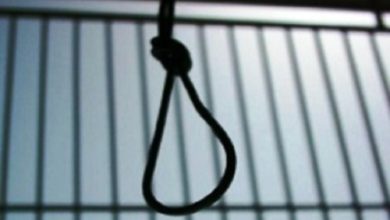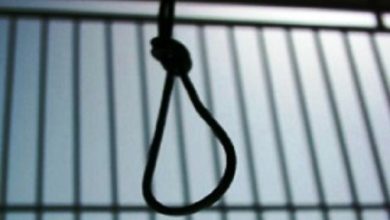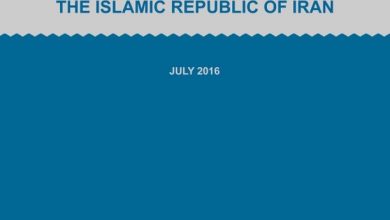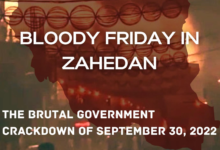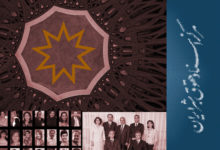Witness Statement of Sepideh
Place of Birth: Tehran, Iran
Date of Birth:
Occupation:
Interviewing Organization: Iran Human Rights Documentation Center (IHRDC)
Date of Interview: May 28, 2009
Interviewer: IHRDC Staff
This statement was prepared pursuant to a telephonic interview with Ms. Sepideh. The statement consists of 43 paragraphs and 9 pages. The interview was conducted on May 28, 2009. The statement was approved in Persian by Sepideh on August 9, 2009.
My Husband and I Are Arrested
1. In 1986, there was a massive wave of arrests. Some of those arrested were married couples. After a while, many of the married women received suspended sentences or were set free, but their husbands remained in prison.
2. My husband and I were arrested on September 5, 1986. My husband was arrested outside our home, and my son and I were arrested at our place of residence after midnight. They entered through the main door and showed us the arrest warrant. It had been issued by the Komiteh-yeh Moshtarak (Committee)[1] at the Towhid detention facility. My two-year-old son and I were taken to the Committee and we spent the night in a cell.
3. During that period, the prison atmosphere had changed. My husband and I were not tortured in each other’s presence. On the first day of interrogation, they confronted me with my husband. I was blindfolded and could not see him, but I could sense that there was a large table between us. He was seated at the other end of it. His voice was very weak. It was obvious that he had been tortured. Our son was beside me the whole time and was constantly crying. Later during our visits, my husband confirmed that he had been severely tortured.
4. My son and I were kept in a small solitary cell. They took me in for interrogation every morning and afternoon. The interrogations lasted about three weeks. After that, they did not occur as often. At the time, I did not occupy any important political posts and did not have any critical information. As a result, I was neither tortured nor harshly interrogated. However, I had been expelled from law school because of my previous political activities.
Conditions inside the Committee Detention Facility
5. Usually around sunset, my son would constantly cry and beg to see his father. One day one of the guards got fed up and yelled at him. He was terrified. He went silent and never begged for anything again. After about two weeks, they transferred the two of us to a closed-door public ward.
6. In the closed public ward there were about eleven adults and seven children. The doors to the cells were closed. There were no accommodations in the cells. Because there were quite a few children, they supplied us with two red plastic cans without lids. We placed these cans in the corner of the cell and used them when the children needed to go to the bathroom. Inmates who had kidney problems were also forced to use these cans. When it was time for someone to go to the bathroom, the others in the room would turn around so the inmate would have some privacy. Everyone in that room got sick after a while. We complained. One time they brought in a doctor who was accompanied by a female guard. The guard felt our hands, and without the use of a thermometer determined whether we were running a fever or not. When the doctor saw my son, he strongly suggested that he be transferred out of the cell. Nothing could be done at the time, but I later mentioned the doctor’s suggestion during one of my interrogations. The authorities contacted my husband’s family and they came and took my son away. He had developed a bad infection. I was later informed that he had run a fever and had the chills for almost four weeks, during which time he was on antibiotics. There was another child who had developed terrible diarrhea, but he was not allowed to leave prison because the authorities did not want to alert the inmate’s family that she had been arrested. The poor child could not hold anything down. As soon as he ate his food, his mother and the others would sit him on the red plastic can they had supplied us.
My Trial and Detention in Evin
7. I was detained in Committee for about a month and a half. I spent the next two months in Evin. During the first month, I was held in solitary confinement. The next month, I was transferred to a public ward. Then I was tried and sentenced. My trial lasted four to five minutes. I was able to take my blindfold off in court. A court secretary asked me several questions, including information about me and my activities. That was it. No lawyer, no opportunity to present a defense. Then the judge came, and within minutes the whole thing was over. This, despite the fact that I had not been involved in any particular activity and had done nothing illegal. About a week later they took me to an office and officially informed me of my charges and released me. They sentenced me to a three-year suspended sentence, but I was required to either report to Evin, the investigations office on Saba Street, or my local Committee for a period of seven years. In the beginning, I was required to report every week, but later they changed it to every two weeks. After that, it was every forty-five days.
8. Before I was transferred to Evin from Committee, I was able to meet my husband once. The meeting took place in the presence of a guard, and lasted about two to three minutes.
My Release and My Husband’s Transfer to Evin
9. After my release, the first meeting between me, my husband and his family took place around December 1986. This meeting took place approximately four months after his arrest. At the time, he was still being detained in Committee. We met in person. Prisoners who were detained in Committee and were allowed to meet family were usually temporarily transferred to the Evin prison facility in Luna Park. They were taken to two small rooms in which the family members of two or three other prisoners were also present. The prisoners were seated close to their family members, with several guards and interrogators surrounding them. The meetings usually lasted around twenty to thirty minutes. After that, there were no meetings until my husband was permanently transferred to Evin.
10. My husband was transferred to Evin in February 1987. At the time of his transfer to Evin from Committee, he had been detained for six or seven months.
11. He was in solitary confinement during his first month at Evin. After that, we had visits every two weeks. If the scheduled meeting fell on a holiday or was cancelled, we would not be allowed to make up for time lost. During one of these visits, my husband told me that he had received a two-year sentence. He told me this in early 1987. He also told me that this was the information they had given him, but he was not sure whether it was really true or not.
Prison Conditions Begin to Change
12. By early 1986, Asadollah Lajevardi’s[2] harsh system of prison administration no longer existed. The prisoners became emboldened and took part in a series of collective actions intended to resist the authorities inside the prisons. These actions resembled organized strikes. One time, after my husband received his sentence, several of the prisoners inside his ward engaged in one of these strikes. My husband was sent off to solitary confinement. When I went to visit him, they told me I could not do so. They did not give a reason. I had to wait two weeks before I could see him again.
13. But immediately prior to 1988, we (the victims’ family members) witnessed troubling signs suggesting a return to the pre-1986 conditions. The prison authorities began taking actions that we assumed were being taken because of their lack of experience, or because they wanted to put pressure on the prisoners and their families. We never imagined that they had bigger plans in mind. We began to hear that prisoners were being taken to solitary cells for various reasons, and that the relaxed prison environment was coming to an end.
14. We witnessed some of these changes in late 1987 and early 1988. At Evin, visiting families were instructed to go to an area called Luna Park. Luna Park was an amusement park for children. However, the authorities had built a building at the end of this park, which we called “Luna Park” because it was next to the amusement facilities. Prison authorities conducted most of the administrative work in connection with preparing prisoners for visitation and delivering goods from the families to the prisoners from Luna Park. The families usually went there to find out information about their loved ones.
15. On visitation days, we went to the front of the Luna Park building and stood in line. When it was our turn, we handed our identification cards to a guard who was seated behind a glass window inside a small room in order to request a meeting with our loved ones. (Only close family members, such as fathers, mothers, children, spouses and siblings who were over thirty years of age were allowed to go in for regular visits. Siblings who were under eighteen years of age were only allowed visits once a year.) Everyone was required to show identification. The authorities then handed us a piece of paper and told us to wait in line again until we were summoned into the prison complex. There were separate entries for men and women. They conducted body searches and looked through our bags before a special prison minibus picked us up (there was quite a distance between the Luna Park complex and Evin prison itself) and dropped us off in front of Evin.
16. After arriving, the families were corralled into a covered hallway that led into a two-story building. We were taken to the second level and instructed to wait until our names were called. After our names were called, we went through a door and entered another room where we met our loved ones. The room was filled with small cubicles. The cubicles were separated from each other with waist-high walls in order to create a sense of privacy. A glass window allowed family members to see the prisoners on the other side. Family members and prisoners talked to each other through a phone receiver. The authorities could disconnect the phones whenever they wished. Families were summoned in the room according to the number of cubicles (and prisoners) that were available. We were instructed to sit in the cubicle that matched the number we had been provided before entering, and were strictly forbidden from going to other cubicles. The meetings were supposed to last fifteen minutes, but were usually cut short after about ten minutes. It was a very stressful environment, and most of our discussion time with the prisoners was spent talking about random matters. Children under four or five years of age were allowed, after a body search, to cross over to the other side of the cubicle in order to spend five or six minutes with their mothers or fathers. This occurred after the meeting between the adults had come to an end, and we were instructed to leave the room.
17. During one of these otherwise “normal” visitation days, I remember the authorities returning some of the books the prisoners had been given and telling us that they (the prisoners) no longer needed them. This was around three or four months prior to the start of the executions. When I visited my husband, I asked him what the issue was. He said the authorities had raided their cells and confiscated all the books. At the time, we thought nothing of this move.
No More Family Visits
18. Around mid-July 1988, all visits came to an end. We went to Luna Park several times. Each time, the authorities informed us that there were no visits. We asked why, but they did not provide us with any explanations. Many of the families continued to go to Luna Park every fifteen days and demanded that the authorities allow us visits. But they would not give us any information. One time I remember the authorities informed us that there would be no visits because the Mojahedin had attacked Iran’s borders. They said that some of the prison guards had gone to the front to fight against the Mojahedin.
19. The prohibition on family visits continued and the guards continued to evade our questions whenever we went to Luna Park. I remember that some of the family members threatened to go visit Ayatollah Montazari and seek his assistance, but their bus was stopped on its way there and the passengers were detained and interrogated for several hours. After that, the families went to the Ministry of Justice office and sought help from members of the Majlis. I and several other family members informed the Ministry of Justice authorities that we had not received a letter from our loved ones in weeks, and that we knew nothing of their whereabouts. Then on August 3, 1988, many of the families received letters from their loved ones. I, too, received a letter. I believe that many of the families whose loved ones were executed during the summer of 1988 received these letters on that day.
20. The letters caused great concern and anxiety. In my letter, my husband had written: “[M]y memories with you are drawn on my mind and they are like an eternal stone tablet that will never be destroyed … A long time has passed since our last visit … I hope you are well. Take care of our son. I cannot speak much to our son during these short visits. Talk to our son on my behalf. Ask him what he likes … You can write letters on my behalf and read them to him.”
21. The tone and content of this letter was noticeably different from the previous ones. I became extremely worried. I was not alone. Other families were in similar circumstances.
22. From late July to around November 1988, we went to Luna Park every two weeks and demanded visitation rights. Each time, they told us that there were no more visits, but they continued to take the clothes, dried milk, and medicine we had brought for our loved ones. In fact, throughout this whole period they took everything we had taken over for the prisoners, probably in order to put our minds at ease that the prisoners were safe and sound.
23. The prisoners’ families often interacted with the State Prison Organization[3] (SPO) when it came to administrative matters dealing with family-prisoner relations. Family members registered their names with the SPO in order to receive information and assistance. Each of us had identification cards that we needed to produce every time we dealt with the SPO. Around October or November of 1988, after months of trying to find out information regarding the status and whereabouts of our loved ones, one of the family members informed us that the SPO had closed her husband’s file. In November, I went to the SPO to find out what was going on. I, too, was told that my husband’s file had been closed. I asked them what the reason was, hoping that he had been released. In response, the SPO authorities informed me that they had received a list from the Prosecutor’s Office stating that certain people were to be prepared for release. We assumed that the authorities probably wanted to give them amnesty, so we began collecting money to post bail. We were in the process of preparing for my husband’s release from prison when we heard the news.
Receiving the News…
24. The last time we went to Luna Park to demand visitation rights was sometime in November. As usual, we pressed them for answers and they referred us to the Assistant Prosecutor’s Office for more information. So we went over there. If I am not mistaken, it was either November 17 or 18. When we arrived at the office, we noticed that the waiting room was filled with families seeking information regarding their loved ones.
25. The authorities recorded our telephone number and addresses and told us they would contact us shortly. As we were waiting, we listened to the stories of other families who had been summoned. Some of them claimed that their sons had been executed, and that authorities had returned their belongings to them.
26. That same day, representatives from the Prosecutor’s Office contacted several families and gave them the locations of the Committees they should visit in order to get more specific information about the prisoners. It was a Wednesday when they called my father-in-law’s house and asked him to go and meet them. I think it was November 23, 1988.
27. On Thursday, November 24, I went to Evin. I told them that we have received a telephone call instructing us to go to Committee. I asked what was going on. Again, they referred me to the Assistant Prosecutor’s Office. I went there. There were many families waiting. The person I spoke to directed me to the Karim Abad Committee office, which was located close to Khavaran cemetery. When I asked him why I should go there, he said I could return the next day and ask the Assistant Prosecutor why they had summoned me there.
28. On Friday, November 25, I went to the Karim Abad Committee with my father- and sister-in law. Many families were waiting in line. The guards separated the families from each other and informed us that only one family member was allowed to go inside. My father-in-law wanted to go in, but I told him I wanted to go instead. I went and stood in line. There were three families ahead of me.
29. Once I was allowed inside, I noticed two people sitting in the room. There was another person who went in and out. When I entered, one of them turned to me and said: “It seems that you know why you are here?” I said: “No. My husband’s term ends in two months and [he] may be released. We don’t know what’s happening. We were told to come here and here we are.” He said: “Your husband has been executed. Take his belongings and leave.” He handed over some of my husband’s belongings, including his watch. The watch was no longer working. He took it, changed the time, and handed it back to me.
30. I started to argue with him. I yelled: “What is the meaning of this? My husband went to court and was sentenced to two years. He was to be released in two months, and in any case, he was not a Mojahed and he’s done nothing. These things have nothing to do with him.” The official replied: “We only know that you should think about yourself and your kid. He did not think of his wife and child.” I said, “Yes, his heart was … far greater than that.”
31. I asked the official about my husband’s will and the location of where he had been buried. He began to yell and said: “He did not have a will, and it is not clear where his place is. You should go to the Prosecutor’s Office if you have any questions.” He was trying to end the conversation quickly so he could get rid of me. Before I left, the official warned me and the rest of the families that we were not allowed to hold memorial ceremonies for our loved ones. The official personally threatened me and reminded me that I had a history and that they could reopen my case file if I caused any trouble. They wanted to silence me and the rest of the family members.
32. This was the method used to inform families regarding what had happened with their loved ones. At the Karim Abad Committee (where they handed us our loved ones’ belongings), the authorities offered to reimburse us for the money we had been paying them for months if we able to provide a receipt. I had my receipt. I showed it to them and received the money.
33. We tried not to cry in front of them. Our crying began when we arrived home. We held a small ceremony with our family members. Our relatives, close friends and those who had suffered the same loss attended the ceremony. We held it at the house of my father- and mother-in-law. Their house was not raided, but I know of some families who were attacked and prevented from holding ceremonies.
The Families Visit Khavaran
34. Until this point, we did know anything about Khavaran—the final resting place for many of those executed in and around Tehran. After we received the news regarding our loved ones, however, we became very familiar with this place. The families gathered at Khavaran every Friday. I went to Khavaran the Friday after the authorities gave me my husband’s belongings. Khavaran is essentially a deserted field. Next to Khavaran is the burial place for the Baha’is. On the other side, many of the political prisoners who had been executed during the early 1980s are buried. Before carrying out the 1988 massacres, the government had dug two large canals at Kahvaran.
35. When we arrived there, both canals had been filled. The ground was left uneven and rippled. You could still see pieces of clothes, slippers and combs on the ground. We were not allowed to touch the dirt or sit down on the soil. There were lots of families there, and all were ordered to stand on their feet. Security forces were everywhere, and I could see several Revolutionary Guard vehicles parked outside. We could smell the stench of the dead. I remember one time one of the kids stepped into mound and his foot sank in. He was terrified. The soil was still soft.
36. I do not know the dimensions of Khavaran, but a series of the canals followed a vertical line to a high wall that separated our section from the Armenian section, and another series followed a horizontal line to the center of the cemetery.
37. As I said previously, the families visited Khavaran every Friday. The women intentionally wore colorful scarves and tried not to wear black. We wanted to let them know that they could not break us. We also took lots of colorful flowers and picture frames containing images of our children, spouses and siblings. During the course of the ceremonies, the authorities often destroyed or confiscated the picture frames. Uniformed or plainclothes security agents were always present during these visits, and often threatened people to leave the premises. We did not have permission to sit down or touch the dirt, and were forced to stand the whole time we were there. This was very difficult for many of the older women who were there. Most of those who were buried there were from leftist groups or factions.
38. These days, victims’ families usually visit Khavaran once every month. Yet they always try to go there on the last Friday of the year, and on the start of the New Year.
The Aftermath
39. One and a half years after our first visit to Khavaran, we received a call informing us that the authorities would issue a death certificate for our loved ones if we wished to receive one. It was important to have a death certificate for administration reasons, so I took my husband’s identification booklet and applied to receive one. The authorities told me that the documents would be ready in two weeks. Two weeks later, I went to get the certificate. Again, I asked them about my husband’s will and his exact place of burial. The authority replied: “[Your husband] was a communist. He did not have a will. He was an atheist so he does not have a burial spot.” I told him that I did not accept his answer. I added that even if my husband were not religious, he still had to be buried somewhere. I then asked him to produce a handwritten note from my husband indicating that he did not wish to write a will. The officer responded: “What do these people know about the importance of burial? It means nothing to them.”
40. I was then directed to the Assistant Prosecutor’s Office in order to receive my husband’s death certificate. I was handed a document that stated my husband’s place of birth, his background, and the cause of death. For the cause of death, they had written: “Death by natural causes.” I could not believe it. I asked the official: “Death by natural causes?” He said: “It would have been difficult for you had we written execution.” I responded: “It would not have been more difficult than his absence.” This angered him. He began yelling at me, took the certificate, and wrote the word “Execution” next to the cause of death. As I was leaving the room, he threatened me and said that I had caused unnecessary trouble for myself. When I asked him what he meant, he replied: “You will see.”
41. I had not reached home yet when someone had called my family and informed them that I had to introduce myself to the Saba Investigative Committee the next morning. (The Saba Investigative Committee was used to summon prisoners who had suspended sentences but had to periodically turn themselves in and provide reports regarding their recent activities. I had gone there several times myself because I, too, had a suspended sentence.)
42. I went there the next morning. They blindfolded me and took me to a room. For hours they interrogated me. The interrogations consisted of a written portion and an oral question and answer session. I believe they recorded my answers. The interrogation lasted until late in the evening, after which I was released. This all happened merely a day after I received my husband’s death certificate.
43. After this incident, I was forced to report to the Committee several other times. My suspended sentence was for three years, but I was forced to report to Committee for seven straight years.
[1] Komiteh-yeh Moshtarak, or “Committee,” refers to an infamous detention facility used by the Shah’s security and intelligence forces to detain, interrogate and torture political prisoners. After the 1979 revolution, the Islamic Republic renamed it the “Towhid detention facility,” but continued to use the facility as a place to detain and interrogate many of its political opponents.
[2] Prior to 1988, Asadollah Lajevardi was the notorious Governor of Evin Prison. He was known as the “Butcher of Evin” due to his harsh interrogation and torture techniques against political prisoners. Lajevardi returned to his position as Governor of Evin immediately after the 1988 summer massacres (during which time he was the Prosecutor of the Revolutionary Court in Tehran). He was assassinated in 1998.

